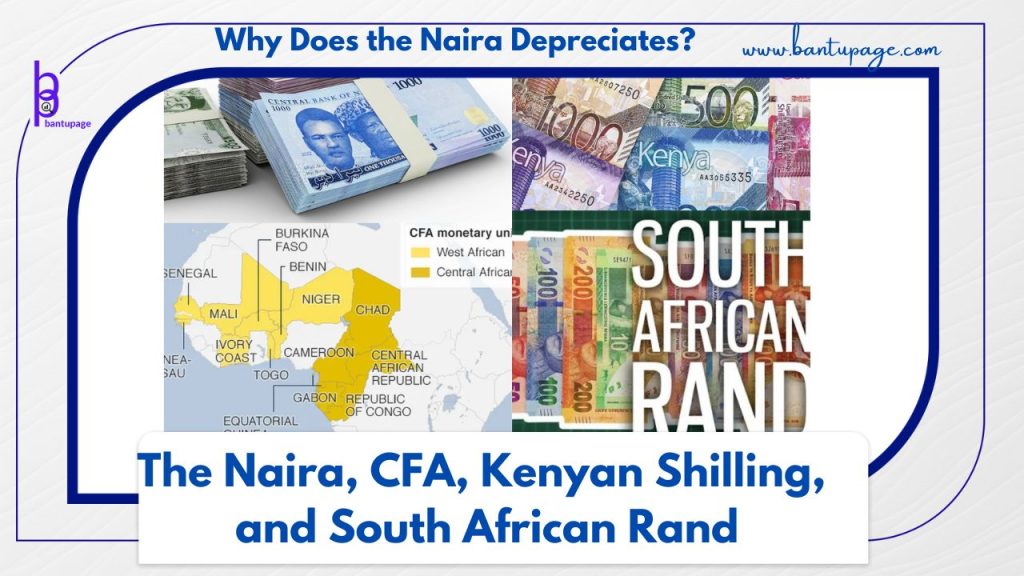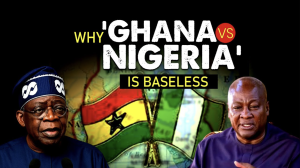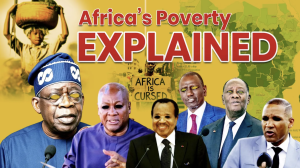
Why Don’t Other African Currencies Drop Like the Naira?
Have you ever paused for a moment to consider the unique situation of the naira’s continuous decline, while other African currencies seem to maintain their stability? The justifications you have heard apply to Kenya, the West, and Central African countries. However, why don’t their currencies follow the same path as the naira?
Are you starting to decipher the disparities in our economic landscape? The Nigerian economy is more robust and significant and outshines the entire West African economy. Like the rest of West Africa, Nigeria is an import-based economy that produces more than the six countries that comprise BEAC, the Bank of Central African States. BEAC serves six central African countries that form the Economic and Monetary Community of Central Africa: Cameroon, the Central African Republic, Chad, Equatorial Guinea, Gabon, and the Republic of the Congo. There are two CFA francs between West and Central Africa: The Central and West African francs. Both currencies have maintained stability since 2010, while the naira has lost over three times its value. The question remains: why?
In this article, I want to delve into three African currencies: The West African CFA franc, dubbed XOF; the Kenyan Shilling, dubbed KES; and the South African rand, dubbed R and ZAR. The value of the naira against these three currencies has plummeted thrice since 2010. Nigeria is the largest market in West Africa; citizens from that region imported Nigerian products, taking advantage of its productivity and market share, which were strengthened by the naira. For the first time in over four decades, West Africans have begun to reject the naira, as it is no longer worth its market value against Nigeria’s productivity. Nigerians also feel the brunt, as they can no longer use their debit and credit cards abroad. Given the naira’s volatility, the central bank has blocked interactions between naira debit transactions and every other currency.
From the APC elites to almost every finance and economic pundit, including Peter Obi, they have all argued that Nigeria’s over-reliance on imports and its lack of productivity are the reasons behind the naira’s collapse. But if that were true, the Central and West African CFA francs would have dropped like the naira. This suggests that the actual cause of the naira’s drop is either unknown, or not being fully disclosed.
The Kenyan shilling has also seen relative stability, even though Kenya is equally reliant on imports and produces less than Nigeria. No country in sub-Saharan Africa is self-sufficient, not even South Africa, yet almost every currency in sub-Saharan Africa is stabler than the naira. Why? In 2010, ₦1 was 3.2 CFA (XOF) francs, 0.52 Kenyan shilling, and ₦23 to 1 South African rand. Today, it is 1 CFA (XOF) franc to ₦2.7, 1 Kenyan shilling to ₦12, and 1 South African rand to ₦89. Nigeria generates more USD and other revenue than the rest of Central or West Africa combined. It may receive fewer FDI on average, but the size of its economy and revenue generation, on average, outclasses the combined Central or West African economies. However, its currency depreciates, while the currencies of the other two African regions remain stable. The speed at which the Nigerian naira depreciates resembles economies ravaged by war or sanctions.
 The naira vs West African CFA franc between 2010 and 2024
The naira vs West African CFA franc between 2010 and 2024
 The naira vs South African rand between 2010 and 2024
The naira vs South African rand between 2010 and 2024
Never in the history of the naira has the value dropped as quickly as it did under APC President Buhari and even faster under another APC president, Bola Ahmed Tinubu Touted as the supposed architect of an already existing Lagos and the proclaimed genius, experienced, and know-it-all. When he took over from Buhari in May 2023, 1 CFA (XOF) franc was ₦0.75, 1 Kenya Shilling was ₦3.3277, and 1 South African rand was ₦23.4. Today, 1 CFA (XOF) is ₦2.7, 1 Kenyan shilling is over ₦12, and a South African rand is ₦89. In the year the genie has been in office, the naira has lost over 50% of its value. The projections of Nigeria’s 2024 GDP gross by the IMF and other foreign agencies now reflect this trend. It went from over $400 billion in 2023 to $252 billion in 2024.
 The naira vs the Kenyan shilling between 2010 and 2024
The naira vs the Kenyan shilling between 2010 and 2024
The collapse of the naira is yet to be fully understood. The Nigerian government must be willing to accept incompetence and seek competent individuals to revive the naira. Our future and the sacrifices of the last few decades depend on a few individuals who have no idea what to do with the Nigerian economy. The Nigerian public is so deeply divided by ethnic lines that even if an election were held today, President Tinubu and the APC would likely win again because ethnic allegiance trumps objective reasoning. The tribal politics of Nigeria are very unique. In countries like Ghana, Kenya, or South Africa, where the population is equally heterogeneous as in Nigeria, polity is not served by ethnic lines. Ethnicity does not play a prominent role at the ballot box or in political candidacies. Until Nigeria outgrows its ethnic allegiance, the future will remain gloomy.
By Ikechukwu ORJI





